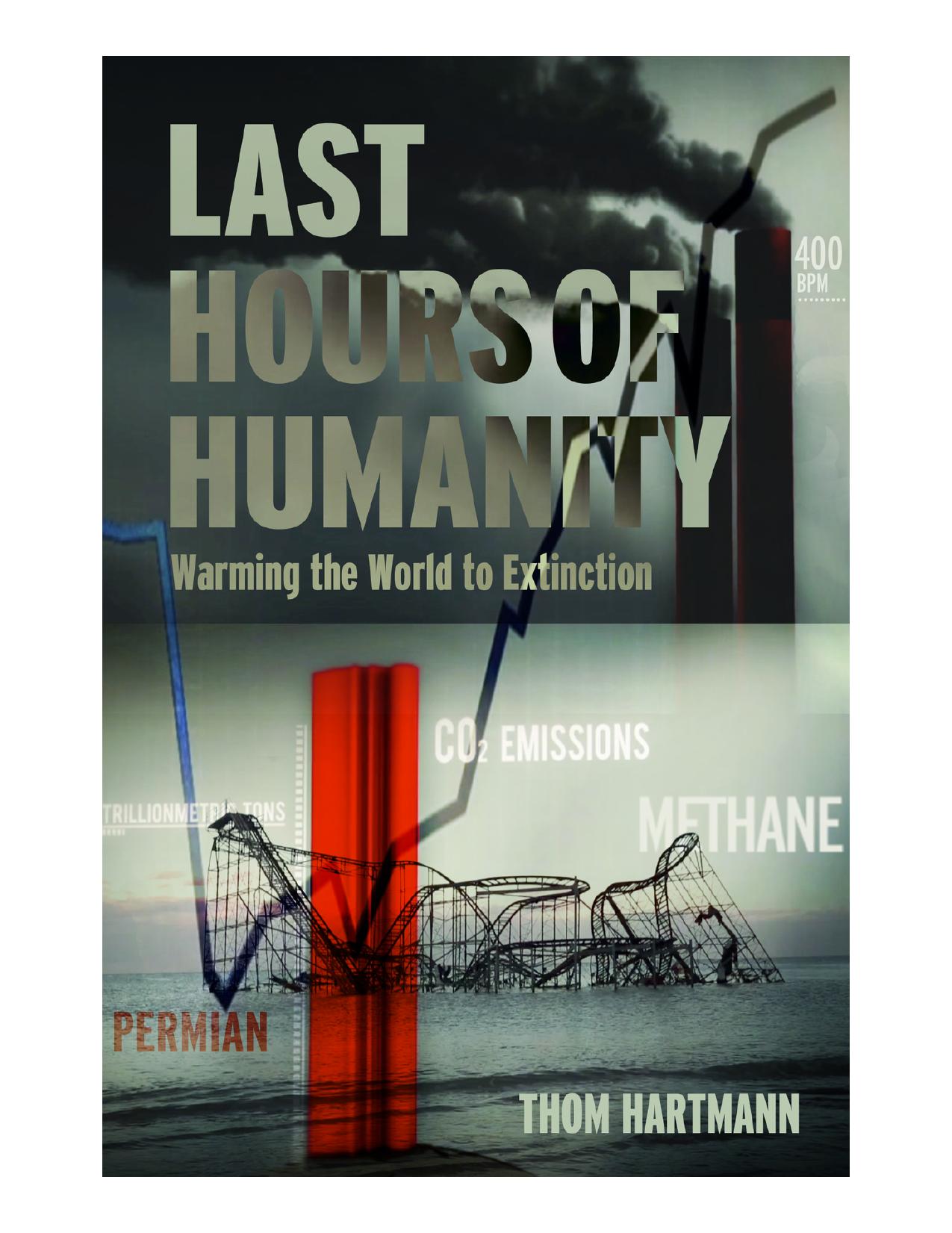The Last Hours of Humanity: Warming the World to Extinction by Thom Hartmann

Author:Thom Hartmann [Hartmann, Thom]
Language: eng
Format: epub, pdf
Tags: POLITICAL SCIENCE/Public Policy/Environmental Policy
Publisher: Waterfront Digital Press
Published: 2013-08-25T04:00:00+00:00
Torches in the seas
Only discovered in a serious way in the 1960s, there is so much methane in the form of clathrates, such as the frozen methane slurry on the floor of the continental shelves around the oceans of the world, that it’s at least double all the known underground coal, oil and gas on the entire planet.
Peter Ward, the paleonotologist at the University of Bristol, told me, “Methane is way worse than carbon dioxide. It’s inert right now in the soil. It’s not affecting anyone in any way. When you warm it though, it becomes a gas. Then it starts acting immediately as a greenhouse gas. So this is an immediate and very short term threat to planetary civilization.”
For the last decade, a joint U.S.-Russia research team out of the International Arctic Research Centre at the University of Alaska, Fairbanks has been exploring the East Siberian Arctic. They are looking at the bottom of the sea-floor where once stable reserves of frozen methane have begun thawing and bubbling up into the atmosphere. Dr. Igor Semiletov led the research team in 2011. He told the British newspaper, The Independent, about what he found that year and the scope of the impending methane problem. “Earlier we found torch-like structures like this but they were only tens of metres in diameter. This is the first time that we’ve found continuous, powerful and impressive seeping structures more than 1,000 meters in diameter. It’s amazing.”
Amazing, academically that is. Horrifying for those of us who call planet Earth home. A thousand meters is a kilometer so this one single massive methane leak is a bit more than a half-mile in diameter. And, it is just one of many.
Dr. Semiletov added, “I was most impressed by the sheer scale and the high density of the plumes. Over a relatively small area we found more than 100, but over a wider area there should be thousands of them.” These sights would have been familiar during the Permian and other extinctions as well.
As Paul Wignall explained to me, “The significant thing about methane is it’s a very effective greenhouse gas, so it causes global warming. Once you trigger warming, if you release methane, it’s in positive feedback. It gets warmer and warmer as you release more methane into the atmosphere. So, we think this was a big part of the [Permian] extinction at that time — this very rapid warming.”
Charles Dickens, who had proposed the methane link to the Permian Mass Extinction, told me, “We know that in the bottom of the sea floor, large parts of the ocean margins have methane in a solid phase. And what happens is when you change the temperature, it can melt this frozen methane phase.” He added, “The idea is that during some of [these extinction] events we have some triggering that forces the ocean temperatures to warm and then that melts the solid methane phase which turns into gas and goes into the oceans and atmosphere.”
Paleontologist Michael Benton concluded, “The
Download
The Last Hours of Humanity: Warming the World to Extinction by Thom Hartmann.pdf
This site does not store any files on its server. We only index and link to content provided by other sites. Please contact the content providers to delete copyright contents if any and email us, we'll remove relevant links or contents immediately.
| Anthropology | Archaeology |
| Philosophy | Politics & Government |
| Social Sciences | Sociology |
| Women's Studies |
The Secret History by Donna Tartt(18160)
The Social Justice Warrior Handbook by Lisa De Pasquale(11952)
Thirteen Reasons Why by Jay Asher(8451)
This Is How You Lose Her by Junot Diaz(6435)
Weapons of Math Destruction by Cathy O'Neil(5829)
Zero to One by Peter Thiel(5489)
Beartown by Fredrik Backman(5356)
The Myth of the Strong Leader by Archie Brown(5237)
The Fire Next Time by James Baldwin(5016)
How Democracies Die by Steven Levitsky & Daniel Ziblatt(4954)
Promise Me, Dad by Joe Biden(4908)
Stone's Rules by Roger Stone(4857)
100 Deadly Skills by Clint Emerson(4690)
A Higher Loyalty: Truth, Lies, and Leadership by James Comey(4550)
Rise and Kill First by Ronen Bergman(4545)
Secrecy World by Jake Bernstein(4388)
The David Icke Guide to the Global Conspiracy (and how to end it) by David Icke(4380)
The Farm by Tom Rob Smith(4323)
The Doomsday Machine by Daniel Ellsberg(4245)
